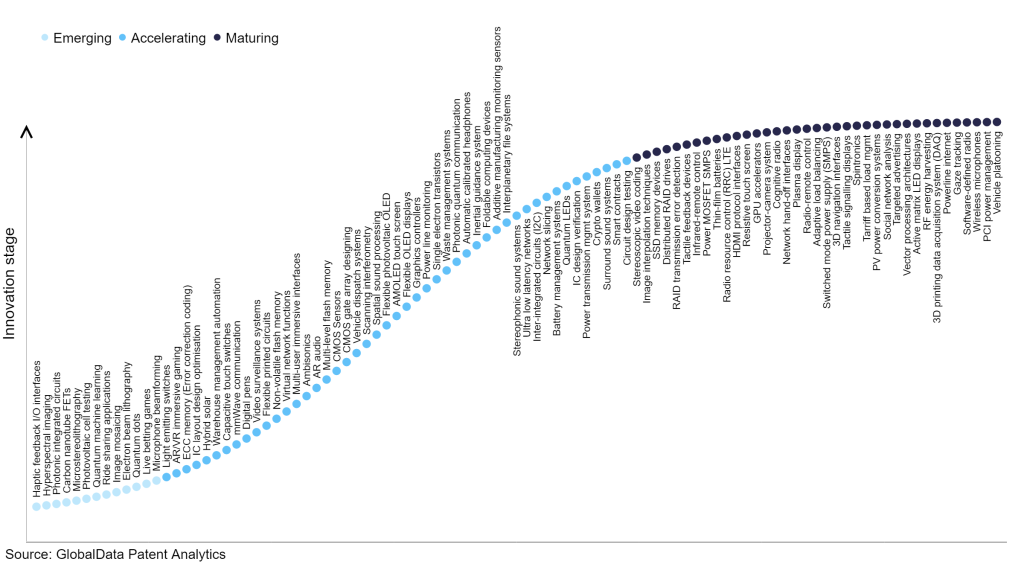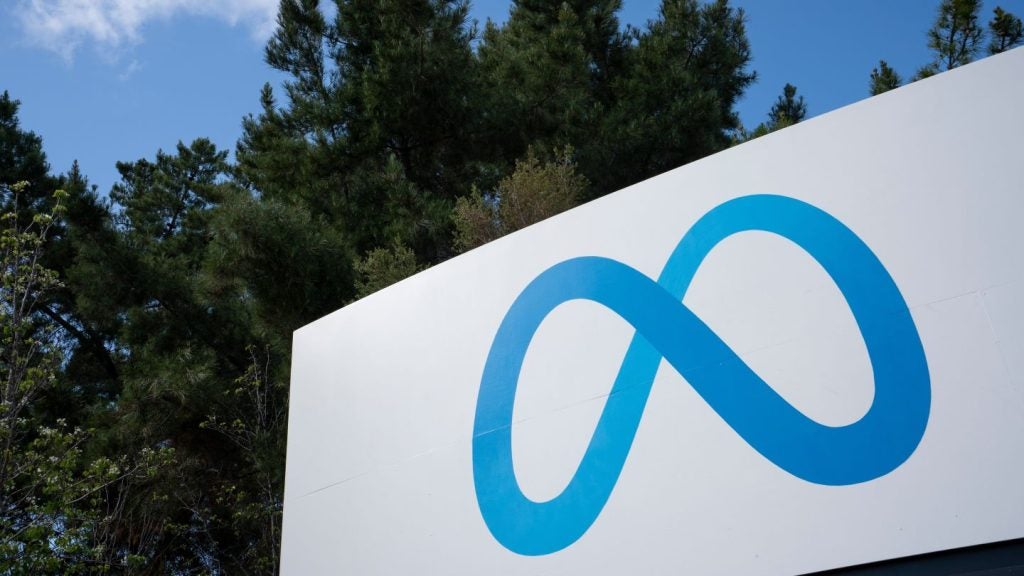The technology industry continues to be a hotbed of innovation, with activity driven by the increasing demand for high-speed and high-bandwidth applications such as 5G networks, autonomous vehicles, and virtual reality, and growing importance of technologies such as advanced antenna arrays, beamforming techniques, and sophisticated signal processing algorithms to overcome challenges of signal attenuation and interference. In the last three years alone, there have been over 3.6 million patents filed and granted in the technology industry, according to GlobalData’s report on Technology Innovation: MmWave communication. Buy the report here.
However, not all innovations are equal and nor do they follow a constant upward trend. Instead, their evolution takes the form of an S-shaped curve that reflects their typical lifecycle from early emergence to accelerating adoption, before finally stabilising and reaching maturity.
Identifying where a particular innovation is on this journey, especially those that are in the emerging and accelerating stages, is essential for understanding their current level of adoption and the likely future trajectory and impact they will have.
300+ innovations will shape the technology industry
According to GlobalData’s Technology Foresights, which plots the S-curve for the technology industry using innovation intensity models built on over 2.5 million patents, there are 300+ innovation areas that will shape the future of the industry.
Within the emerging innovation stage, microphone beamforming, live betting games, and quantum dots are disruptive technologies that are in the early stages of application and should be tracked closely. Circuit design testing, communication, smart contracts, and surround sound systems are some of the accelerating innovation areas, where adoption has been steadily increasing. Among maturing innovation areas are vehicle platooning and PCI power management, which are now well established in the industry.
Innovation S-curve for the technology industry

mmWave communication is a key innovation area in technology
Millimetre wave (mmWave) communication refers to a wireless communication technology that employs high-frequency millimetre waves within the 30 GHz to 300 GHz range to transmit data. This form of communication offers high data rates and low latency, making it well-suited for various applications including 5G networks and the Internet of Things (IoT). With speeds reaching up to 10 Gbps-100 Gbps and a range of up to 1km, mmWave communication presents an opportunity for faster and more reliable wireless connectivity, opening doors to new possibilities in numerous industries and sectors.
GlobalData’s analysis also uncovers the companies at the forefront of each innovation area and assesses the potential reach and impact of their patenting activity across different applications and geographies. According to GlobalData, there are 110+ companies, spanning technology vendors, established technology companies, and up-and-coming start-ups engaged in the development and application of mmWave communication.
Key players in mmWave communication – a disruptive innovation in the technology industry
‘Application diversity’ measures the number of different applications identified for each relevant patent and broadly splits companies into either ‘niche’ or ‘diversified’ innovators.
‘Geographic reach’ refers to the number of different countries each relevant patent is registered in and reflects the breadth of geographic application intended, ranging from ‘global’ to ‘local’.
Patent volumes related to mmWave communication
Source: GlobalData Patent Analytics
Qualcomm is a leading patent filer in the field of mmWave communication.
One of the company’s patents focuses on techniques for assisted power control during a random access channel (RACH) procedure. A user equipment (UE) determines the transmit power for a message in the RACH procedure with a secondary base station (BS) based on communication with a primary BS. The UE then transmits the message to the secondary BS during the RACH procedure using the determined transmit power.Other prominent patent filers in the space include Ericsson and Huawei.
By geographic reach, Gogo leads the pack, followed by GuangDong OPPO Mobile Telecommunications and Omron Tateisi Electronics. In terms of application diversity, General Access Solutions holds the top position, followed by Meta Platforms and Ubiquiti.
The mmWave communication technology offers significantly higher data rates and lower latency compared to traditional wireless communication systems. The ability to transmit large amounts of data quickly over short distances makes mmWave communication a promising solution for enabling fast and reliable wireless connectivity in various industries and applications.
To further understand the key themes and technologies disrupting the technology industry, access GlobalData’s latest thematic research report on Technology.
Data Insights
From

The gold standard of business intelligence.
Blending expert knowledge with cutting-edge technology, GlobalData’s unrivalled proprietary data will enable you to decode what’s happening in your market. You can make better informed decisions and gain a future-proof advantage over your competitors.







